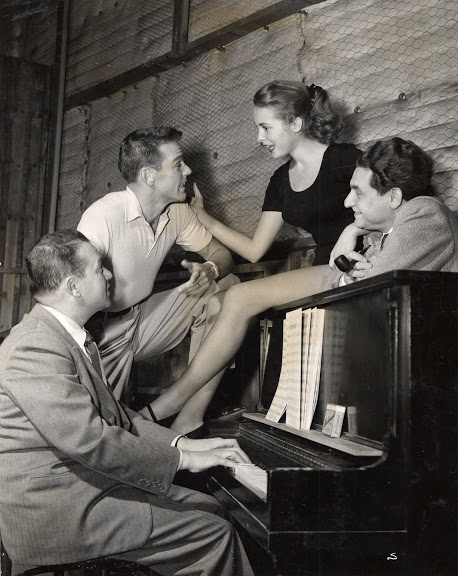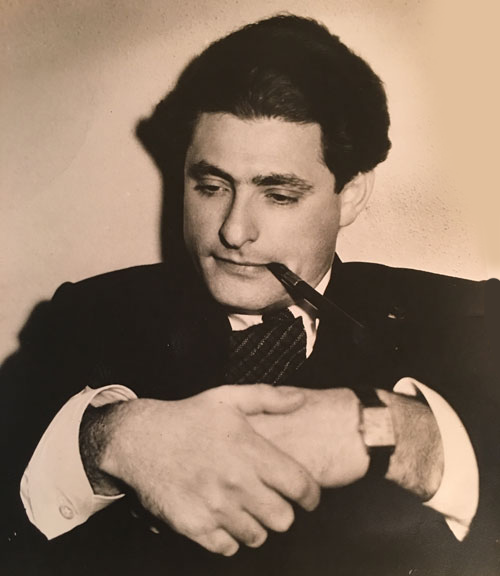Thanks For The Memory

Rehearsing in the studio in 1955 for My Sister Eileen. Clockwise: Jule Styne at the piano; choreographer Gower Champion who was working on a different film for Columbia nearby and apparently dropped by that day to say hi; film actress Janet Leigh and lyricist Leo Robin; Gower and Janet already knew each other since he had helped her with her dancing four years earlier on Two Tickets to Broadway.

Songwriters honor Leo Robin at a special event sponsored by the Songwriters Hall of Fame. From left to right: lyricist Harry Tobias, lyricist Leo Robin, popular standards singer Margaret Whiting, composer Burton Lane and composer Harold Arlen at a 1982 reception hosted by the Songwriters Hall of Fame to honor Leo Robin

Marilyn Monroe singing “Happy Birthday” and “Thanks for the Memory” to President John F. Kennedy at an early birthday celebration in Madison Square Garden on May 19, 1962. She segued from “Happy Birthday” into her own original rendition of “Thanks for the Memory:” “Thanks, Mr. President/For all the things you've done/The battles that you've won/ The way you deal with U.S. Steel/And our problems by the ton/We thank you so much...”

Inspiration for "Thanks for the Memory" – What inspired Leo Robin to write the lyrics to "Thanks for the Memory" has been a mystery! Robin said after he wrote the song "that the challenge was to write a song showing that the characters accepted the reality of their divorce but had a large residue of nostalgia and a strong mutual affection." According to this article, in the far right column, apparently "Robin began getting letters from ladies in his past inquiring whether they had not inspired it." Whether it was a lady from Leo's past or some other influence, it is one of the most romantic songs ever written, so much so that you forget it’s about a break up. When Ralph and Leo first played it for the executives at Paramount, it made everybody, even the toughest of the tough cry and although it was written for a comedian, Bob Hope, to sing, they fell in love with the song and used it anyway.



















